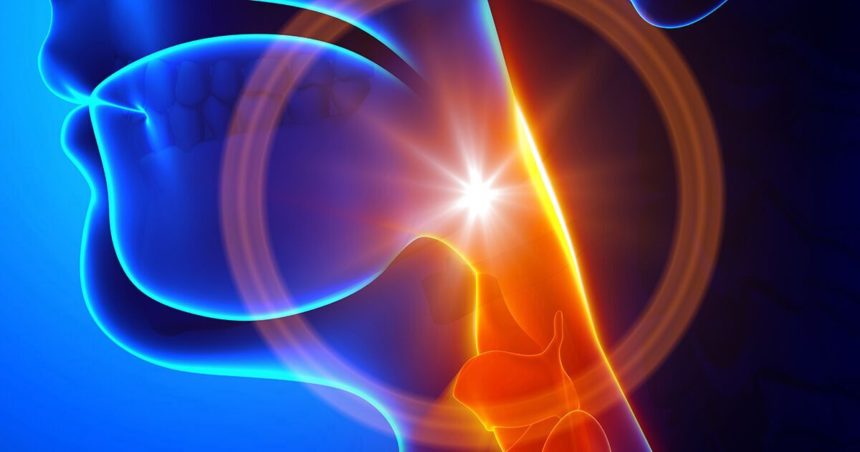Patients with the esophageal disorder achalasia can experience a variety of miserable symptoms: difficulty swallowing, heartburn, chest pain, cough, regurgitation and weight loss.
Standard treatment has long been the Heller myotomy, a century-old surgery to cut the lower esophageal sphincter muscle. Now, there’s a less invasive option.
The procedure is called POEM, for peroral endoscopic myotomy, and the UNC Center for Esophageal Diseases and Swallowing (CEDAS) is one of only a few facilities in the Southeast that regularly performs it.
“POEM does not leave any external scars, there is no alteration of the natural anatomy beyond cutting the spastic esophageal muscles that cause the problem, and patient satisfaction is very high,” says Ian Grimm, MD, a gastroenterologist with the UNC Center for Esophageal Diseases and Swallowing. “We can tailor the procedure in ways surgeons can’t. It’s a lot more flexible. And the cost of endoscopy is nominal compared to the cost of surgery.”
The underlying cause of achalasia is unknown. The symptoms stem from a degeneration of the nerves that regulate muscle coordination in the esophagus. As a result, the lower esophageal sphincter fails to relax with swallowing, which in turn leads to persistent dysphagia, the medical term for difficulty in swallowing. Experts estimate about two out of every 100,000 people develop achalasia annually.
During the POEM procedure, a flexible endoscope is directed through the mouth and down the throat while the patient is under general anesthesia. The endoscope first cuts the inner lining of the esophagus to create a narrow tunnel. This allows the scope to reach the muscles in the wall of the lower esophagus. These muscles are cut using a tiny electrical knife passed through the scope.
The cut in the inner lining is then closed with small metal clips, which eventually fall off and pass harmlessly through the digestive tract.
Dr. Grimm traveled to Tokyo to study with Haruhiro Inoue, MD, PhD, who developed the POEM procedure in 2008.
“Japan is where POEM was invented and where it has evolved. They have done more than 1,300 POEMs at Showa University hospital, so it was an excellent place to learn,” Dr. Grimm says. “UNC has the biggest esophageal center in the region, so it was important to be able to offer POEM here, too.”
For patients, the medium-term favorable response to POEM ranges from 82 to 100 percent, which is comparable to the results with Heller myotomy. In fact, some people who have had a failed Heller myotomy later undergo POEM, with improved results. POEM can be used to treat several other esophageal disorders as well.
Dr. Grimm sees POEM as the natural evolution of the Heller operation, which was first performed in 1913 by Enrst Heller in Germany.
“Medicine tends to evolve toward the less invasive procedures, so if you have two nearly equivalent procedures, over time, the less invasive one is going to win out,” he says. “And patients will demand it.”
Retiree Gerry Stanewick, of Wilmington, says having achalasia was painful.
“My weight dropped from 210 to 175 in a year, as I could not eat very much,” he says. “The disease was numbing. I could not sleep and coughed mucus all night. My social life was abysmal.”
He tried pneumatic dilation and Botox injections to relieve his symptoms before meeting Dr. Grimm and choosing to undergo POEM. He has been pleased with the results and has gained 20 pounds.
“I have no trouble eating anything, no acid reflux or difficulty sleeping,” Stanewick says. “I am in very good health. There is nothing I am unable to do, socially or physically.”
To refer a patient to Ian Grimm, MD, or to our team at the UNC Center for Esophageal Diseases and Swallowing, call (919) 843-7200.

